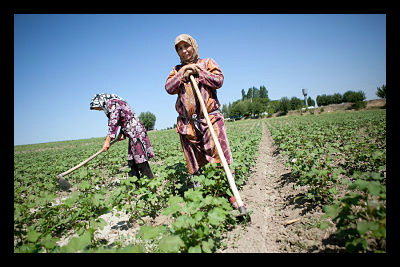In some regions of Pakistan, malnutrition is a major barrier to development. Organizations are working against poverty and a lack of health education or infrastructure that contributes to malnutrition.
The Food and Agriculture Organization reports that 50 percent of Pakistani children under 5 years of age are affected by stunting. In addition, 40 percent of children are underweight, and 9 percent are wasting.
The National Nutrition Survey from 2011 also states that around half of Pakistani mothers are also malnourished.
These numbers vary by region. In Mithi, the district capital of the Sindh province, infant mortality is at 123 out of 1000 births. Nationally, the rate is 75 out of 1000 births.
Each year, 396,000 infants die in Pakistan. Those that survive commonly suffer from deficiencies in iodine, vitamin A, iron, folic acid and zinc.
There are many causes for these deficiencies and the resulting malnutrition.
Many mothers do not breastfeed, nor do they sufficiently space out their pregnancies. The average fertility rate in Pakistan is 4.1 births per woman, and the population is growing at a rate of 1.95 percent each year. This is the highest rate in South Asia.
Many mothers also do not start weaning their children at six months, which is recommended for proper growth.
After early childhood, there is also low consumption of fruit, vegetables, fish and meat. The majority of people’s diets consist of cereals.
This diet is largely a result of what is available for the population; 60 million people in Pakistan live in poverty. These people cannot afford balanced diets or multivitamins and iron supplements to counteract their lack of healthy foods.
There is also little access to health centers, and those that are available are underfunded. These health centers are unable to cope with the medical complications that arise from malnutrition. Malnutrition lowers immunity and the effectiveness of certain vaccinations. It also leads to an increased risk for diarrhea, pneumonia and measles.
The connection between health and poverty is a cyclical problem. Stunted growth has been connected with up to a 46 percent decrease in salaries as adults. These adults can then not afford the healthcare and nutrition to provide for their children.
There are organizations working to counteract this cycle.
The Community Management of Acute Malnutrition (CMAM) project trains people to educate others on health and education. CMAM is funded by the European Commission’s Humanitarian Aid department, and run by UNICEF.
The project trains Health and Nutrition Educators at its 27 Nutrition Centers. These centers are in Pakistan’s Sindh and Khyber Pakhtunkhwa provinces, where a large percentage of the country’s malnourished live.
They teach a variety of subjects: hygiene, feeding for young children and infants, treating children and mothers and supplying food for malnourished children.
CMAM also takes in malnourished children and provides them with treatment. It uses the educators to find these children in its own communities.
Malnutrition in Pakistan is identified by mid-upper arm circumference and the proportion of height to weight.
Since the inception of the program in 2011, over 560,000 people have benefited from this education and support. The program would like to expand, treating more than just the severe cases of malnutrition. It also wants to tackle peripheral issues related to malnutrition, like water and sanitation, hygiene, health care infrastructure and livelihoods support.
The World Food Program (WFP) also has a project in place called the Micronutrient Initiative. This initiative is working to provide nutritional food and supplements, with support from UNICEF and Gain.
Read more about Malnutrition in Pakistan
The salt iodization program is the main focus, as the WFP has found that this is the only successful nutrition intervention program in the nation.
Because of these interventions, iodine deficiency in mothers has dropped from 57 percent to 18 percent. In school-aged children, the number has dropped from 40 percent to 12 percent.
The Country Director of the Micronutrient Initiative, Dr. Tausif Akhtar Janjua, stated that he would like to see more access to clean water, nutrition education, access to nutritious food and increased food security, in addition to the work on supplementing nutrients.
He believes there needs to be a focus on women and children, then a focus on poverty reduction in order to keep fighting malnutrition in Pakistan.
– Monica Roth
Sources: IRIN News, UNICEF, FAO, Tribune, The News, The News 2
Photo: IRIN News




